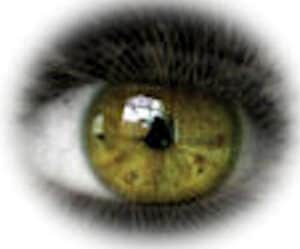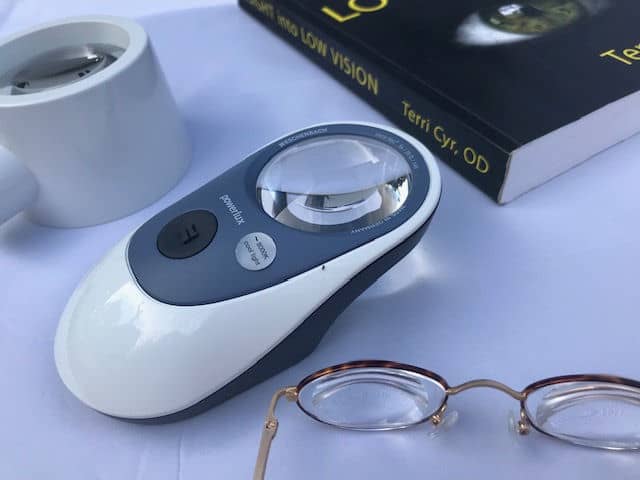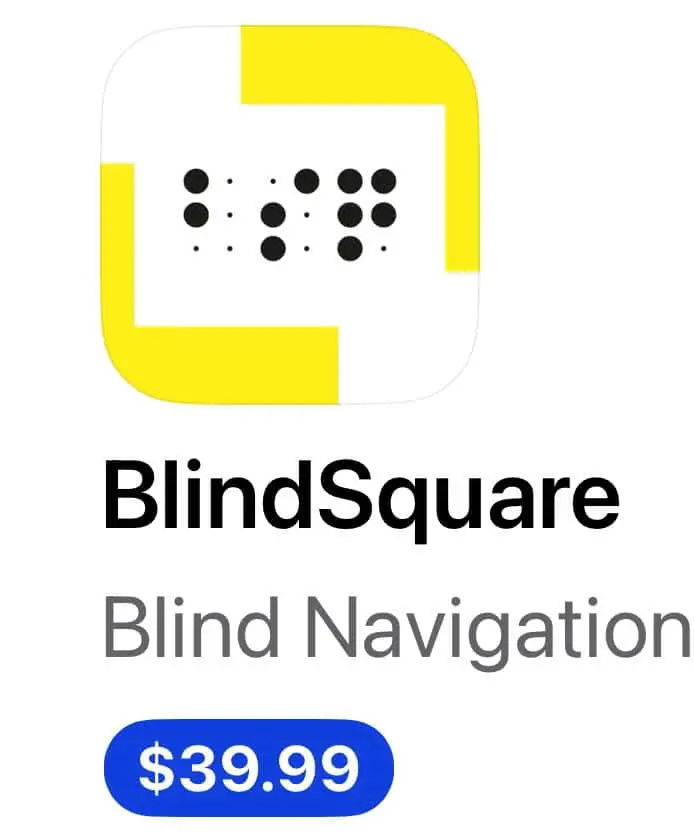Low vision therapy exercises are specialized training exercises crafted to assist visually impaired individuals in utilizing their remaining vision effectively, with or without devices. These exercises aim to optimize the use of residual vision, improving the ability to carry out activities of daily living (ADL).
These exercises are typically conducted under the guidance of a vision rehabilitation specialist or an occupational therapist, tailored to the individual’s specific needs and the nature of their visual impairment.
Several factors can influence the success of vision training. Age, motivation, family support, depression, and living circumstances can either facilitate or hinder the learning process.
It’s important to note that progress in vision training is gradual. Learning new skills may require 2 to 4 weeks of daily practice. During this time, the visually impaired individual may experience feelings of frustration, discouragement, or impatience. Those with more severe vision loss may require an extended period to learn how to best utilize their residual vision.
What are the types of low vision exercises?
Vision loss manifests in various forms, and therapy exercises must be customized accordingly. It’s crucial to tailor these exercises to the individual’s specific needs and objectives.
It’s important to recognize that some vision impairments cannot be corrected with eyeglasses or contact lenses. Conditions such as macular degeneration, diabetic retinopathy, and inherited retinal diseases fall into this category. Additionally, loss of peripheral vision, also known as “side vision,” is another common impairment, seen in conditions such as glaucoma and retinitis pigmentosa.
1. Training in the use of low vision devices, principally magnification.
Low vision devices encompass a range of tools, from the simplest hand-held optical magnifiers to advanced video magnifiers, computer technology, and head-borne telescopes and electronic glasses.
Factors that training with low vision devices will address:
- Is the device used with prescription eyewear?
- Is the device to be used for near reading or the distance?
- How far away from the eyes is the device best used?
- How to hold the device.
- The best lighting when using the device, and where the lighting should be located.
- Learn how to use optional features of the device.
Training with low vision devices often involves trial and error, especially when devices are purchased online. If you or someone you know is having difficulty with a low vision device, it could be due to either the device not being the right fit or not being used correctly.
Learn more about hand-held magnifiers: What are Portable Hand -Held Video Magnifiers?
2. Eccentric Viewing Training Exercises
These training exercises are particularly beneficial for individuals experiencing central vision loss due to conditions such as macular degeneration, diabetic retinopathy, and inherited retinal diseases.
They help the individual learn to utilize the peripheral areas of vision that are not affected by the disease. While these peripheral areas may not offer the same sharpness of vision as the central area once did, they can be immensely helpful when used in conjunction with magnification.
Through eccentric viewing, an individual gradually learns to rely on this “other” area of the retina as their preferred spot for seeing (known as the preferred retinal locus, PRL). Low vision eccentric viewing exercises aid in developing proficiency in identifying this area and swiftly referencing it for clearer vision.
Mastering eccentric viewing enables individuals to better utilize magnifying devices and enhances their ability to navigate their environment independently.
Interestingly, I’ve observed that younger individuals with visual impairments and those who experience a gradual loss of vision often naturally develop eccentric viewing skills without formal instruction or training.
3. Training Orientation and Mobility
Orientation refers to knowing your location in the environment relative to objects and walls, while mobility involves the ability to move safely and efficiently from one location to another within that environment. These essential skills are taught by highly specialized Orientation and Mobility Specialists.
This training is particularly beneficial for individuals who are blind or have severely restricted peripheral vision. Examples include those with conditions such as retinitis pigmentosa, end-stage glaucoma, or diabetic retinopathy.
O&M training techniques:
1. The Sighted Guide. The visually impaired grasps the arm of a trained guide just above the elbow and follows that guide to the side and slightly behind. The guide will give instructions by arm movement or verbally when approaching ‘obstacles’ such as door frames, stairs, curbs, and narrow passageways.
Vision Awareness Training YouTube Video
2. The Long (white) Cane. The low vision user sweeps the cane back and forth in a rhythmic manner to detect obstacles and changes in terrain. In this way, the cane is a tool of independence.
The cane is often used as a form of identification for the public to acknowledge the presence of the visually disabled. By law, they should be given the “right of way” (US).
Click here for: White Cane Laws by State
There are ‘smart canes’ which utilize electronic technology to aid the visually impaired with detecting obstacles. One concern of the cane user is detecting objects above the waist. This technology can help identify these objects. They use tactile feedback in the form of vibration (haptic) feedback or audio navigation.
3. Guide Dog. The dogs trained as guide dogs are carefully screened for service characteristics. Once determined that a dog has the right temperament and capability, it is put through a rigorous training program before introduction to the blind or severely impaired client.
Those who choose to get a guide dog must themselves have good orientation and mobility skills and will need to develop dog handling skills.
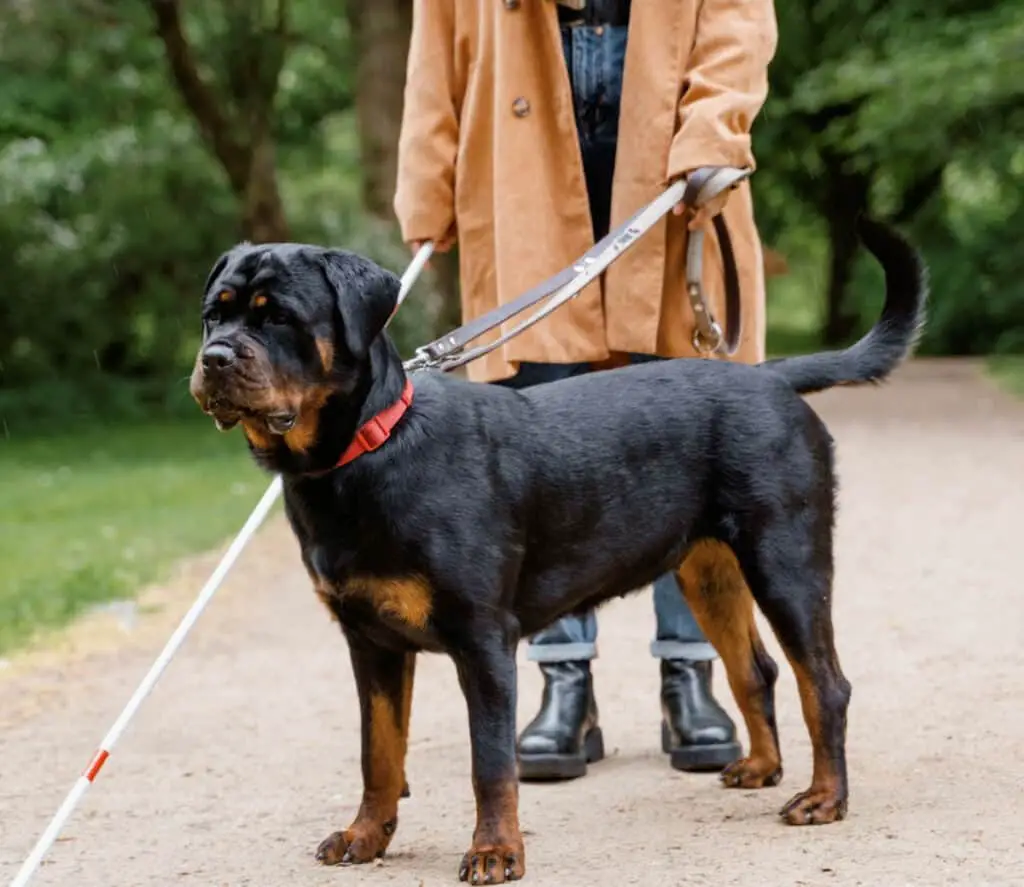
4. O&M training with Electronic Devices. With the advent of smartphones and GPS technology available to the public, the blind and visually impaired benefit from using these devices.
Some devices are dedicated navigation devices like the Victor Reader Trek (Humanware) or smartphone GPS apps with step-by-step navigation. There is a learning curve with these devices. Electronic navigation can be safely used with orientation and mobility training.


Blindsquare for smartphone, iOS
4. Low Vision Tracking and Scanning Exercises
Following Moving Objects: Tracking moving objects with the eyes helps to improve eye movement coordination and tracking abilities. This can help with reading skills and using low vision devices proficiently.
Scanning skills help with the localization of objects both near and at a distance. Someone with low vision can become more efficient and more independent using eye movement to scan their environment. This is especially helpful for those who have lost much of their peripheral vision.
5. Training in the Use of Bioptic Telescopes for Driving
Driving privileges for the visually impaired are determined by state legislators, who establish rules and regulations regarding who can drive with low vision. However, the practice of driving with bioptic telescopes remains controversial and restricted in many places.
Bioptic glasses are low vision assistive telescope devices designed to help visually impaired individuals qualify for driving privileges. However, this option is not available in all US states. In states where driving with a bioptic is permitted, rigorous training is required.
Before using a bioptic for driving, individuals must undergo evaluation by a low vision specialist or rehabilitation specialist to determine their eligibility. If deemed eligible, they receive extensive training with a certified instructor. This training encompasses learning how to effectively use the bioptic telescope while driving and developing the necessary skills for safe driving.
Licensure to drive with a biotic is not given to those who have not completed a training course.
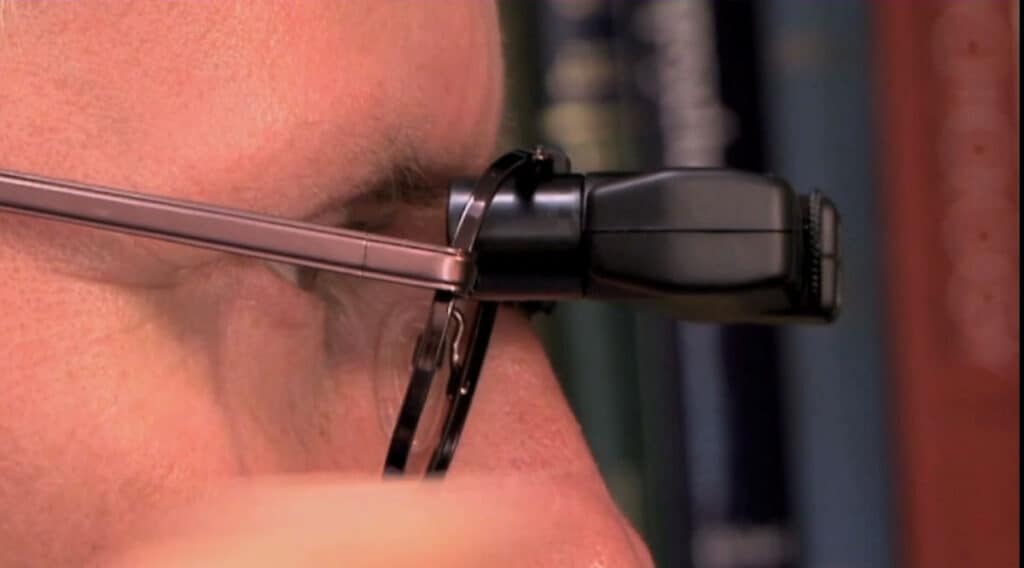
The Ocutech bioptic is an optical device. Learn about other types of telescopes: Low Vision Telescopes for Distance, Intermediate, and Near as Low Visual Aids
Learn about electronic glasses: Comparison of 14 Electronic Glasses for Use as Assistive Technology for Low Vision
Who should get low vision training?
Low vision is a visual impairment that cannot be fully corrected with glasses, contact lenses, medication or surgery, but still allows some usable vision. Factors such as the severity and type of visual impairment, the individual’s desire for independence, and their specific lifestyle needs all play a role in this decision.
Low vision training can be immensely beneficial for individuals with conditions such as macular degeneration, diabetic retinopathy, retinitis pigmentosa, glaucoma, and other vision-related disorders. These individuals often experience challenges in everyday tasks like reading, recognizing faces, navigating their surroundings, and maintaining independence.
Learning how to use visual aids, adaptive technologies, and alternative techniques can empower individuals to manage their condition effectively and improve their quality of life.
It’s also crucial to consider individuals who are experiencing changes in their vision. As vision deteriorates over time, the strategies and techniques taught in low vision training can help individuals adapt and continue to perform daily tasks with greater ease.
Where can someone with low vision get low vision training?
Individuals with low vision can receive low vision training from various sources and often involves a team of professionals who specialize in vision rehabilitation. Here are some places where someone with low vision can access training:
1. Rehabilitation Centers: Many countries have rehabilitation centers or clinics that specialize in vision rehabilitation. These centers often have a team of professionals, including orientation and mobility specialists, occupational therapists, and low vision therapists, who can provide training and support.
2. Specialized Schools for the Blind or Visually Impaired: Some regions have schools specifically designed for individuals with visual impairments. These schools may offer comprehensive vision rehabilitation services, including low vision training.
3. Private Low Vision Specialists: Low vision specialists, often optometrists or ophthalmologists, may provide individualized low vision assessments and training. These professionals can prescribe and teach how to use low vision aids and devices.
4. Local Rehabilitation Services: In many areas, local government or nonprofit organizations provide rehabilitation services for the disabled, including those with low vision. These services may include training in daily living skills, mobility training, and how to use assistive technology.
5. Occupational Therapists: Occupational therapists, who specialize in low vision rehabilitation, can provide training to help individuals adapt and develop strategies for daily activities.
6. Orientation and Mobility (O&M) Specialists: O&M specialists focus on helping individuals with visual impairments move safely and independently in their environment. They can provide training on navigation, mobility aids, and techniques for safe travel.
7. Support Groups and Non-profit Organizations: Joining local or online support groups for individuals with visual impairments can be a valuable resource. Some nonprofit organizations dedicated to supporting the visually impaired may offer training programs or connect individuals with appropriate services.
Additionally, local government agencies and organizations for the visually impaired may have information on available resources in the community.
In The End…
Low vision therapy exercises are a form of rehabilitation. These techniques teach the visually disabled to use their remaining vision and to learn adaptive skills. The goal is to improve their capability to function and thereby improve their quality of life.
Learning low vision adaptive skills can help the low vision individual to be self-sufficient and maintain psycho-social well-being.
If you or you know someone having difficulty with adapting to vision loss, see:
How Vision Loss Affects the Social, Emotional, and Practical Aspects of Life
